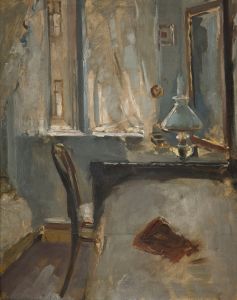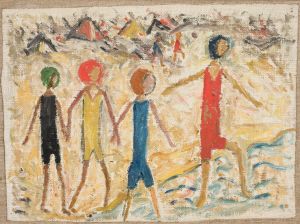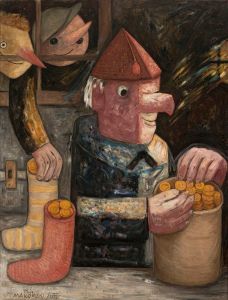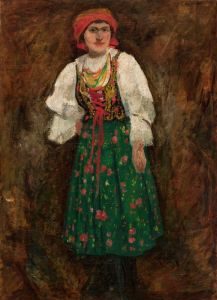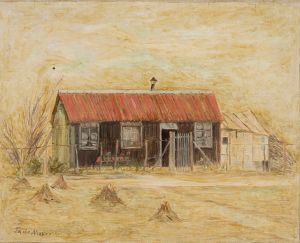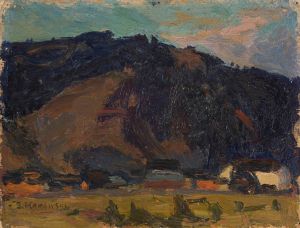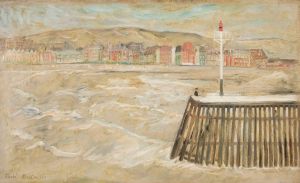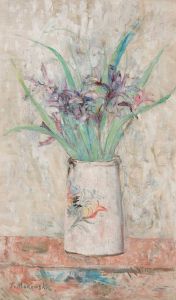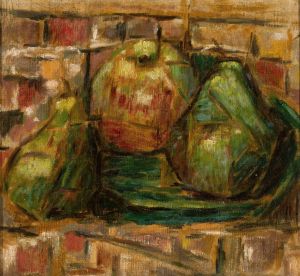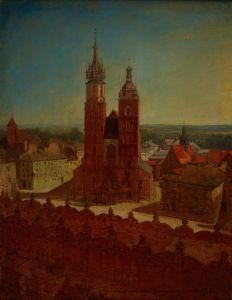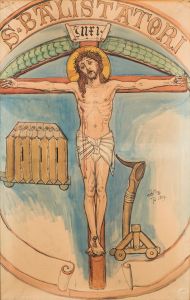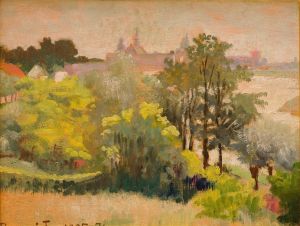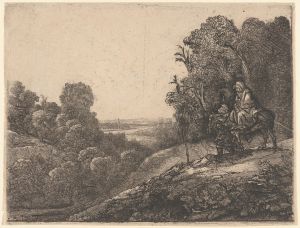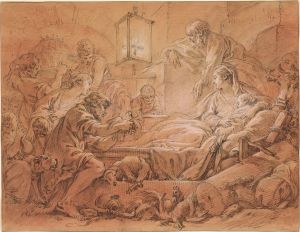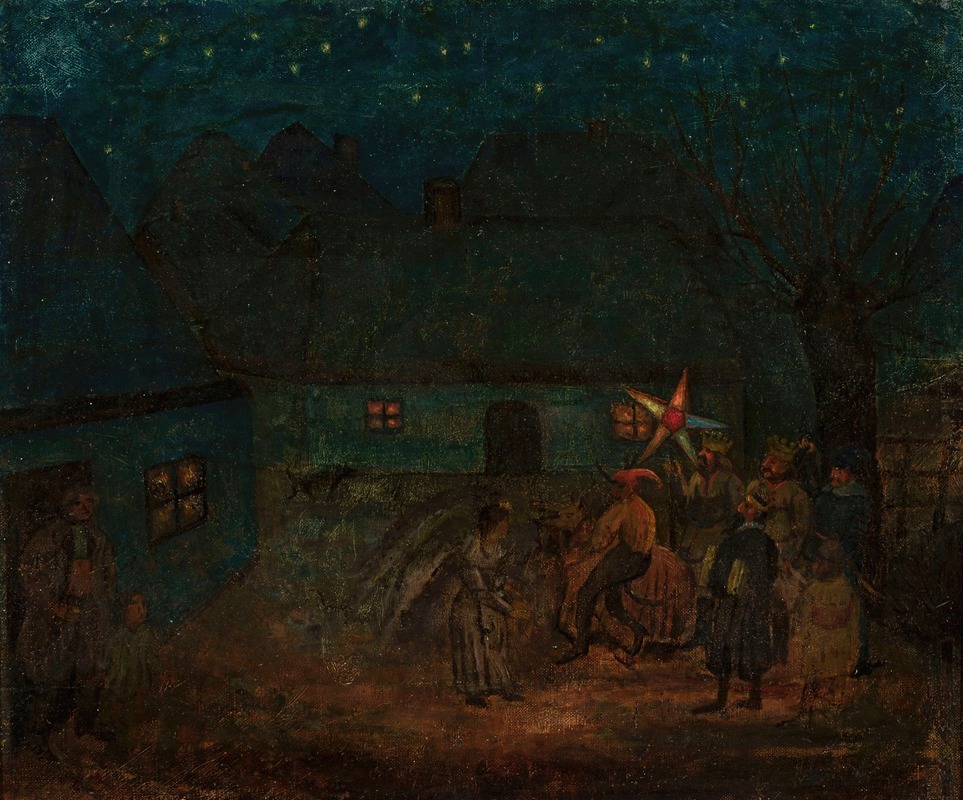
Kraków crib
A hand-painted replica of Tadeusz Makowski’s masterpiece Kraków crib, meticulously crafted by professional artists to capture the true essence of the original. Each piece is created with museum-quality canvas and rare mineral pigments, carefully painted by experienced artists with delicate brushstrokes and rich, layered colors to perfectly recreate the texture of the original artwork. Unlike machine-printed reproductions, this hand-painted version brings the painting to life, infused with the artist’s emotions and skill in every stroke. Whether for personal collection or home decoration, it instantly elevates the artistic atmosphere of any space.
Tadeusz Makowski (1882-1932) was a Polish painter known for his unique style that combined elements of folk art, cubism, and symbolism. One of his notable works is the painting "Kraków Crib" (Polish: "Szopka Krakowska"). This painting reflects Makowski's deep connection to Polish culture and his fascination with traditional folk themes.
"Kraków Crib" is inspired by the traditional Christmas cribs (szopki) of Kraków, a city in southern Poland renowned for its elaborate and colorful nativity scenes. These cribs are a distinctive part of Kraków's cultural heritage, often featuring intricate architectural designs that mimic the city's historical buildings and landmarks. The tradition of creating these cribs dates back to the 19th century and has become a symbol of local craftsmanship and festive celebration.
In "Kraków Crib," Makowski captures the essence of this tradition through his distinctive artistic lens. The painting showcases a detailed and vibrant depiction of a nativity scene, set within an architectural structure reminiscent of Kraków's iconic buildings. Makowski's use of bold colors and geometric shapes reflects his cubist influences, while the whimsical and almost childlike quality of the figures and setting highlights his connection to folk art.
Makowski's work often features a blend of realism and fantasy, and "Kraków Crib" is no exception. The painting's composition is carefully balanced, with each element contributing to the overall harmony of the scene. The figures in the painting, including the Holy Family, shepherds, and angels, are rendered with a simplicity that evokes the innocence and wonder of childhood. This approach is characteristic of Makowski's broader oeuvre, which frequently explores themes of childhood and innocence.
The painting also demonstrates Makowski's skillful use of light and shadow to create depth and dimension. The interplay of light within the crib structure adds a sense of warmth and intimacy to the scene, drawing the viewer's eye to the central figures of the nativity. This technique enhances the overall narrative of the painting, emphasizing the sacred and celebratory nature of the Christmas story.
Tadeusz Makowski's "Kraków Crib" is a testament to his ability to merge traditional Polish themes with modernist techniques. The painting not only celebrates the rich cultural heritage of Kraków but also showcases Makowski's unique artistic vision. Through this work, Makowski invites viewers to appreciate the beauty and significance of Polish folk traditions, while also engaging with the broader artistic movements of his time.
Overall, "Kraków Crib" stands as a significant piece within Makowski's body of work, reflecting his deep appreciation for Polish culture and his innovative approach to art. The painting remains an important example of how traditional themes can be reinterpreted through a modernist perspective, creating a timeless and evocative piece that continues to resonate with audiences today.





